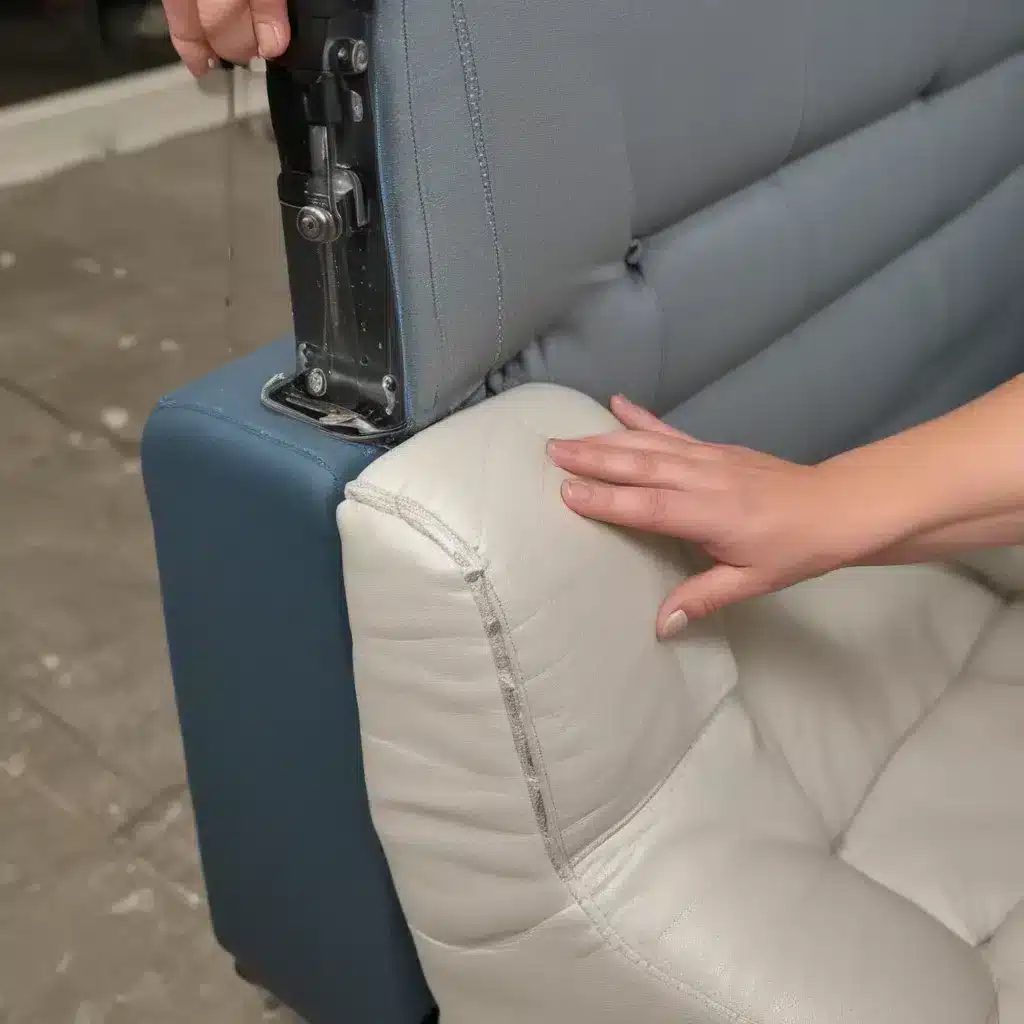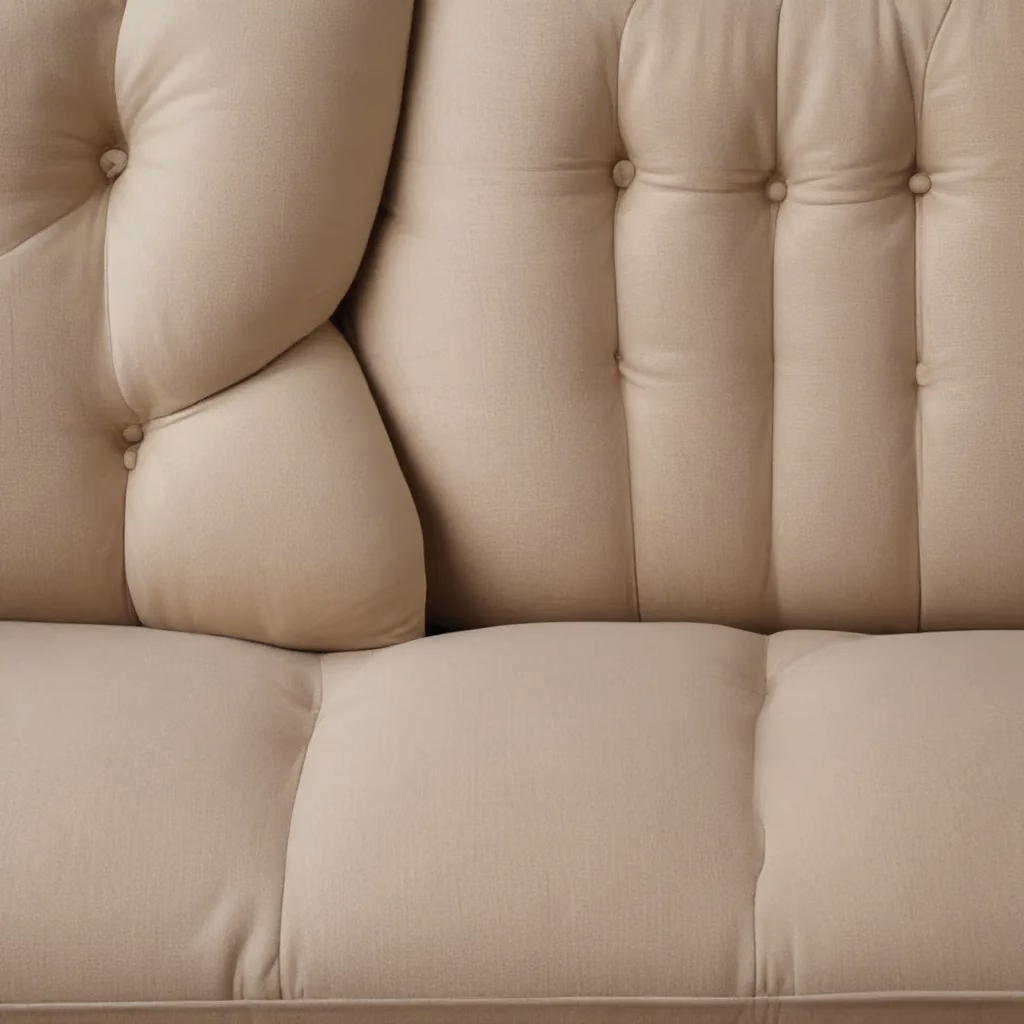Ah, the joys of owning a custom-made sofa. The luxurious feel, the impeccable style, the envy of your friends and neighbors. But what happens when that glorious upholstery starts to show its wear and tear? Those pesky split seams and unraveling stitches can really put a damper on your home decor dreams.
Fear not, my fellow upholstery enthusiasts! I’m here to walk you through the process of fixing those unsightly issues, step-by-step. As a proud owner of a Sofas Spectacular custom sofa, I’ve been there, done that, and I’m ready to share my hard-won knowledge with you.
Identifying the Problem
The first step in any good fix-it project is to properly diagnose the issue at hand. When it comes to split seams and stitching problems on your custom upholstery, there are a few key things to look for:
Split Seams
Split seams are exactly what they sound like – the stitching that holds the fabric panels together has come undone, creating an unsightly gap. This can happen for a variety of reasons, from excessive wear and tear to sloppy workmanship during the initial upholstery process.
Unraveling Stitching
Sometimes, the stitching itself can start to come loose, without the seam splitting entirely. This might manifest as small sections of thread poking out, or even entire lines of stitching slowly unraveling before your eyes.
Fabric Fraying
In addition to the structural issues, you may also notice the fabric itself starting to fray and unravel around the problem areas. This can exacerbate the situation and make the repairs even more challenging.
Once you’ve identified the specific problem, it’s time to start planning your attack.
Gathering Your Supplies
Before you can start stitching and sewing, you’ll need to make sure you have the right tools for the job. Here’s what you’ll need:
-
Curved Upholstery Needle: As demonstrated in this video, a curved needle is essential for navigating the tight spaces and flat surfaces of your sofa or chair. You can find these at most craft or sewing supply stores.
-
Heavy-Duty Thread: Regular sewing thread just won’t cut it here. You’ll need a strong, durable thread, like a heavy-duty nylon or polyester option. As mentioned in this article, you can also use a mattress or upholstery thread for added strength.
-
Scissors: A good pair of sharp, sturdy scissors will be crucial for trimming and shaping the fabric as needed.
-
Needle-Nose Pliers: If you don’t have a pre-curved upholstery needle, you can use these pliers to carefully bend a regular crewel needle into the necessary shape.
-
Seam Ripper: This handy little tool will help you carefully remove any existing stitching that needs to be replaced.
-
Fabric Glue or Adhesive: Depending on the extent of the damage, you may need to use a fabric-safe glue or adhesive to help hold the fabric in place before stitching.
With all your supplies gathered, it’s time to dive in and start repairing those split seams and unraveling stitches.
Preparing the Area
Before you start sewing, you’ll need to carefully prepare the area you’ll be working on. This means:
-
Thoroughly Cleaning the Fabric: Use a soft brush or cloth to gently remove any dirt, debris, or loose threads from the affected area. You don’t want any of that gunk interfering with your stitching.
-
Trimming Frayed Edges: If the fabric is starting to fray, use your sharp scissors to carefully trim away any loose or ragged edges. This will help create a clean, even surface for your stitching.
-
Securing the Fabric: Depending on the extent of the damage, you may need to use a fabric glue or adhesive to temporarily hold the fabric in place before stitching. This can help prevent further unraveling and make the repair process easier.
-
Reinforcing the Area: If the fabric is particularly thin or delicate, you may want to consider reinforcing the area with a small patch of additional fabric or interfacing. This will provide a sturdier base for your stitching.
With the prep work done, you’re ready to start sewing.
Stitching It Up
Alright, time to put those upholstery skills to the test! Here’s how to tackle those split seams and unraveling stitches:
Fixing Split Seams
- Use your seam ripper to carefully remove any existing stitching along the split seam. Try to avoid cutting or tearing the fabric itself.
- Align the fabric edges, making sure they’re precisely matched up.
- Thread your curved upholstery needle with the heavy-duty thread and start stitching, using small, tight stitches to secure the seam. Be sure to backstitch at the beginning and end to lock the stitches in place.
- If the fabric is particularly delicate, you can use a small amount of fabric glue or adhesive to help hold the edges together as you stitch.
- Once the seam is securely sewn, use your scissors to trim any excess thread or frayed fabric.
Repairing Unraveling Stitching
- Use your seam ripper to carefully remove any loose or damaged stitching, being mindful not to cut into the fabric.
- Thread your curved needle and start stitching over the affected area, using small, tight stitches to re-secure the thread.
- If the stitching has created a noticeable gap or hole in the fabric, you may need to use a small patch or piece of interfacing to reinforce the area before stitching.
- Once the stitching is secure, trim any excess thread and use a small amount of fabric glue or adhesive to help hold the area in place.
Dealing with Fabric Fraying
- If the fabric around the problem area is starting to fray, use your scissors to carefully trim away any loose or ragged edges.
- Apply a small amount of fabric glue or adhesive to the trimmed edges to help prevent further fraying.
- If the fraying is more extensive, you may need to consider adding a small patch or piece of reinforcing fabric to the area before stitching.
Remember, the key to a successful upholstery repair is taking your time, working carefully, and using the right tools and materials. With a little patience and attention to detail, you’ll have your custom sofa looking good as new in no time.
Finishing Touches
Once you’ve completed the stitching and reinforcement work, there are a few final touches you can add to ensure a professional-looking repair:
- Trim and Tidy: Use your scissors to carefully trim away any remaining loose threads or frayed fabric edges.
- Brush and Fluff: Use a soft-bristle brush or your hands to gently fluff and reshape the repaired area, blending it seamlessly with the surrounding upholstery.
- Apply Fabric Protector: Consider spraying the repaired area with a fabric protector or scotchguard to help prevent future damage and staining.
And there you have it! Your custom sofa is now looking as good as new, thanks to your handiwork. Sit back, relax, and enjoy the fruits of your labor – your upholstery repair skills are now on point.
Conclusion
Dealing with split seams and unraveling stitches on your custom upholstery can be a daunting task, but with the right tools, techniques, and a little elbow grease, you can have your beloved furniture looking as good as the day you bought it.
Remember, prevention is key – regular maintenance and care can go a long way in preserving the longevity of your custom upholstery. But when the inevitable wear and tear does happen, now you know exactly how to tackle those pesky issues and keep your Sofas Spectacular looking spectacular for years to come.
Happy sewing, my friends!




